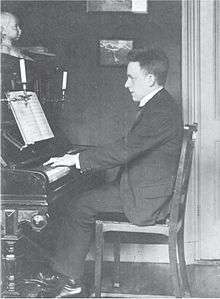Eduard Jan Dijksterhuis

Eduard Jan Dijksterhuis (28 October 1892, Tilburg – 18 May 1965, De Bilt) was a Dutch historian of science.
Career
He studied mathematics at the University of Groningen from 1911 to 1918 and titled his Ph.D. thesis "A Contribution to the Knowledge of the Flat Helicoid."[1] From 1916 to 1953 he was a professor and taught mathematics, physics and cosmography. He wrote about Archimedes in the late 1930s and early 1940s. He advocated changes in the way mathematics was taught to reinforce the formal characteristics of the discipline. In 1950, he was appointed as a member of the Royal Netherlands Academy of Arts and Sciences.[2] In 1953, he was appointed to teach the history of mathematics and the nature of science at Utrecht University and in 1955 at Leiden University. In 1962 he was awarded the Sarton Medal by the History of Science Society.
Bibliography
- 1924 - Val en worp (Free Fall and Projectile Motion)
- 1938 - Archimedes
- 1950 - Mechanisering van het wereldbeeld - (English translation: The Mechanization of the World Picture, published in 1961, also as The Mechanization of the World Picture: Pythagoras to Newton)
- 1952 - Betekenis van de wis- en natuurkunde voor het leven en denken van Blaise Pascal
- 1963 - (with R. J. Forbes) History of Science and Technology (2 vols., Penguin Books)
- 1970 - Simon Stevin - (English translation: Simon Stevin: Science in the Netherlands around 1600)
- 1990 - Clio's stiefkind
References
- ↑ Reijer Hooykaas, Isis, Vol. 58, No. 2, (Summer, 1967), pp. 223-225
- ↑ "Eduard Jan Dijksterhuis (1892 - 1965)". Royal Netherlands Academy of Arts and Sciences. Retrieved 17 July 2015.
External links
| Wikiquote has quotations related to: Eduard Jan Dijksterhuis |
- (Dutch) Dijksterhuis, Eduard Jan (1892-1965) by Klaas van Berkel
- (Dutch)